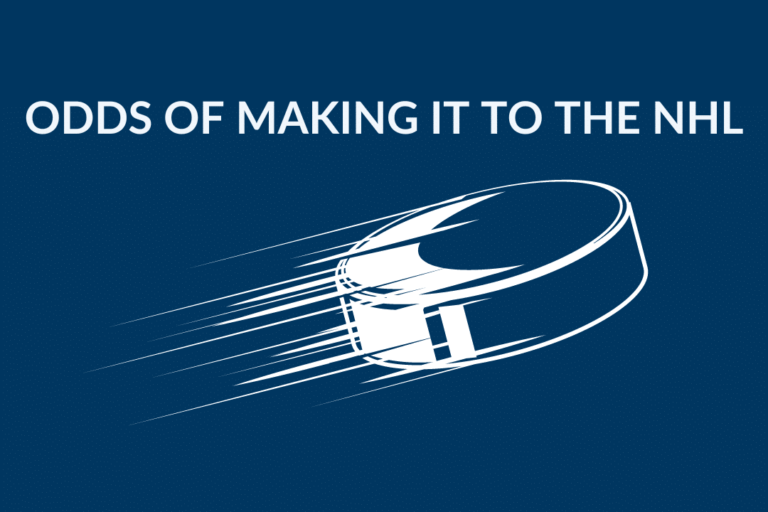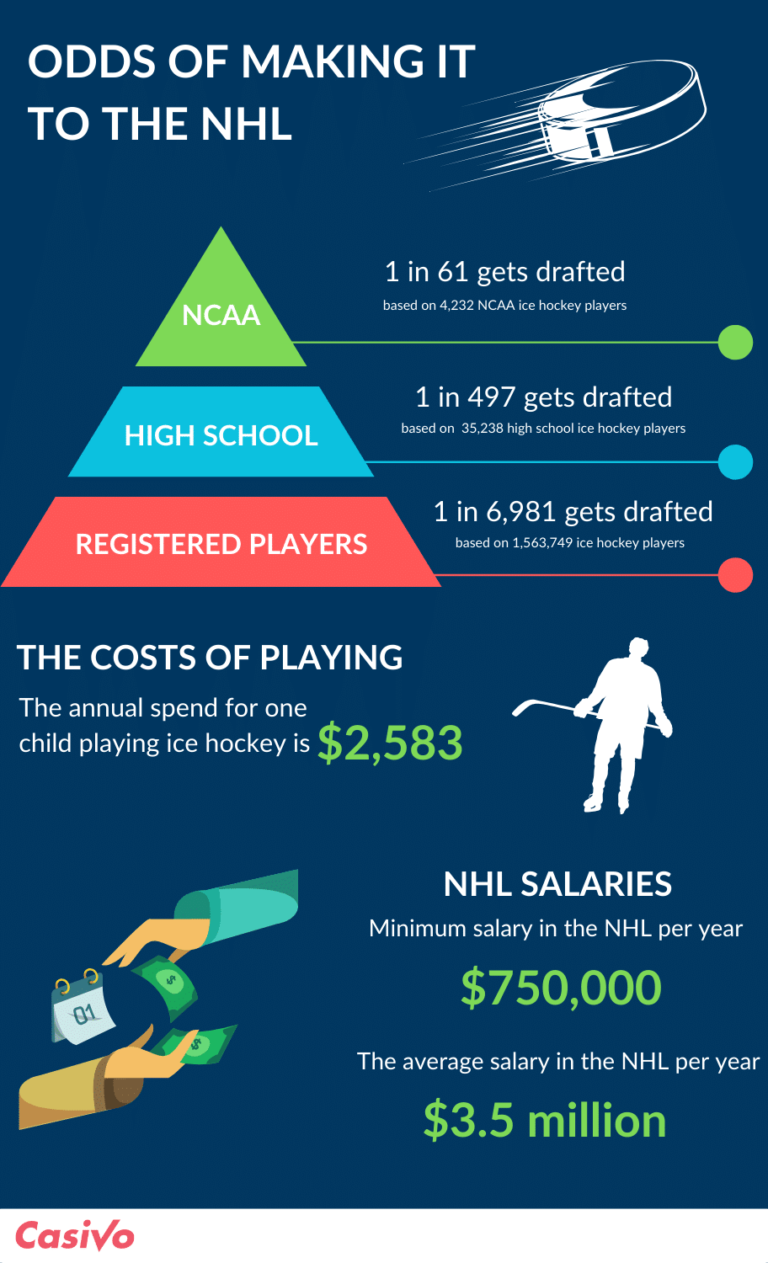Why pursuing an NHL career is a long shot

Dreaming of wearing the coveted jersey of an NHL team? Think again. The path to the ice rinks of the top league is a winding and narrow one, with odds stacked against even the most talented players.
Picture this: every NHL draft, only 224 players are plucked from a global pool of over 1.5 million registered ice hockey players, according to The International Ice Hockey Federation.
That’s right, a staggering 1 to 6,981 shot at making the cut.
We have crunched the numbers
Sure, the dream of NHL’s astronomical salaries and celebrity status is undeniable. But is the pursuit worth it? We have crunched the numbers to find out.
Unsurprisingly, the statistics paint a grim picture. Yet, for those undeterred by the odds, there’s a glimmer of hope.
Dig deeper into the statistics, and you’ll find that from the ranks of high school ice hockey, only one in 497 players makes it to NHL. Even among NCAA athletes, the odds are slim, with just one in 61 participants earning a draft spot.

How much money can you make when drafted?
Let’s talk about numbers. The average salary in the NHL clocks in at a staggering $3.5 million per year, with careers typically spanning 4.5 years. This means an average of $13.75 million over the course of a career.
Before you start counting your millions, let’s get real. These are just averages. For most hopefuls, the reality is far from the multimillion-dollar contracts we hear about. In fact, many will barely scratch the surface of a sustainable NHL career.
And here’s the kicker: even if you do manage to snag a spot in the draft, rookie salaries are capped at $950,000 per year, with strict limits on signing bonuses of 10% of the contracts total. To truly hit the jackpot in the NHL, you’ve got to outshine the competition and be the cream of the crop.
Is ice hockey worth it?
Ice hockey isn’t exactly cheap, from gear to rink time, the costs add up. According to the Aspen Institute of Play, families shell out an average of $2,583 annually per child for hockey expenses.
So, is it worth it financially? For most, the answer’s a resounding no. The odds of hitting it big in the NHL and cashing in on those hefty salaries are slim to none.
But there is a glimmer of hope. If you’re playing high school hockey, it’s a maybe. Sure, the chances of making it to the big leagues are still low, but there’s potential for a future NHL paycheck to offset those costs.
And if you’re in the NCAA? That’s a different story. While the likelihood of covering all your hockey investments with an NHL salary is slim, statistically speaking, it’s worth a shot. So, lace up those skates and hit the ice—you just might strike gold.
Hockey is the best bet for success
Compared to other sports, ice hockey stands out for its potential payoff. Take soccer, for example, with a whopping 250 million participants worldwide. Yet, the path to the big leagues—Premier League, Bundesliga, La Liga, Serie A, and Ligue 1—is filled with hurdles.
Consider the numbers: these top-tier leagues have around 2,500 players in total. Crunch the numbers, and you’ll find that the odds of making it to these elite ranks are a mere 0.0001%—that’s just 1 in a hundred thousand soccer players.
Compare that to hockey. While still challenging, the likelihood of making it to the NHL is notably higher, making it a more enticing prospect for aspiring athletes looking to make their mark on the world stage.
Student first, athlete second
Dreaming big is a right everyone should have, but let’s face the facts: for many, the path to sports stardom remains just that—a dream. Relying solely on the hope of becoming an NHL sensation for financial security isn’t a wise bet.
That’s where the concept of “Student before athlete” comes into play. More colleges are championing this approach, emphasizing the importance of academics alongside athletics. It’s a reminder that while sports may be a passion, education is paramount.
After all, the term “student-athlete” places emphasis on being a student first and an athlete second. By prioritizing education, colleges aim to equip scholar-athletes with the skills and knowledge needed for success both on and off the field.
Methodology & Sources
The study is based on official data available at the international Ice Hockey Federation, the Aspen institute & NCAA.
Fair use statement
If you wish to feature our research, you are welcome to utilize the graphics and content provided above. Kindly attribute Casivo.ca appropriately in your citations and include a link back to this page, enabling your audience to explore further insights from our findings.




